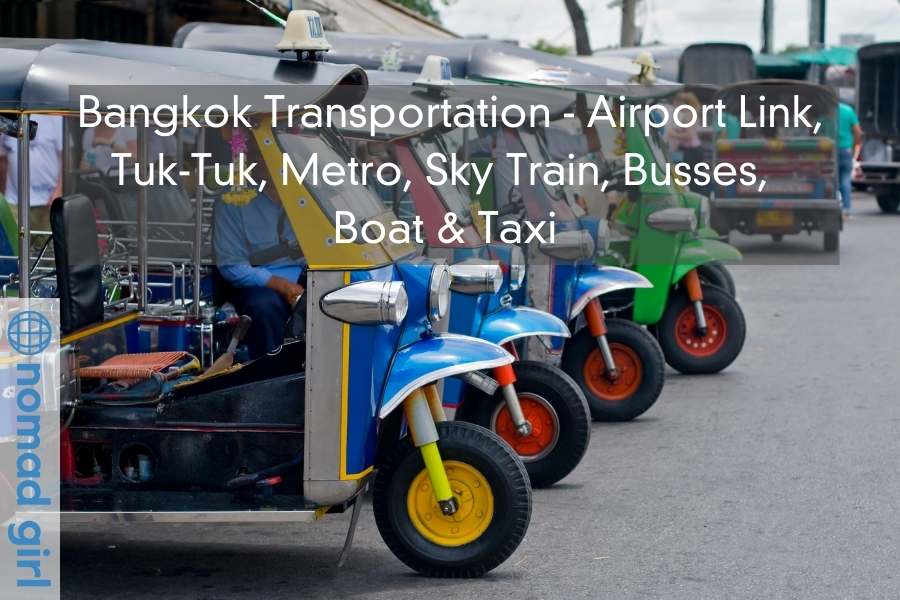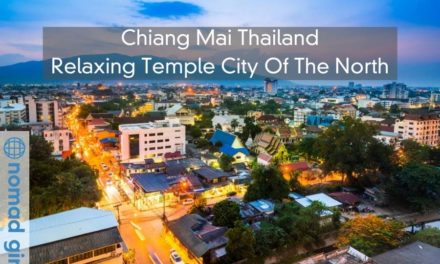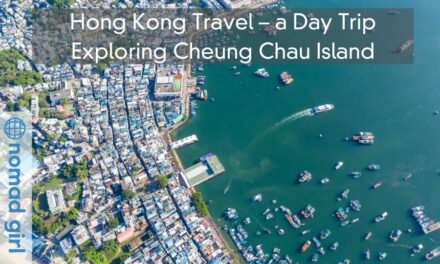Bangkok Transportation
Bangkok is a hub of vibrance, filled with lively streets, beeping cars, an infinite amount of motorbikes and colourful taxis. Street food carts, open-air restaurants, soi dogs, friendly faces and of course an extensive public transport system connecting all areas of the city.
Voted one of the worlds most popular cities for tourism, the transports systems are heavily used and very reliable, with many connections to cities both within Thailand, as well as Cambodia, Laos, and Malaysia.
Most people who visit Thailand will arrive at one of the two airports, Suvarnabhumi Airport or Don Muang Airport. There is a free shuttle bus between the two airports. Don Muang is connected by the public city buses so it is possible to catch either a bus or taxi to this airport quite easily.
Suvarnabhumi Airport is connected to the city on the sky train. The Bangkok Airport Rail Link connects the city at the Makassan Station (at the Phetchaburi MRT station) and at the Phaya Thai Station.
Airport Link Bangkok: Express or City Line
The ticket purchased for the Airport Rail Link Express train is 90 baht, and for 45 baht you can take the City Line Airport Rail Link (non-express, which stops at around 6 stops on the way and takes 30 minutes). You will have to purchase a separate ticket to get to the Makassan or Phaya Thai Airport link Bangkok, stations from any of the other MRT or sky train stations (15 to 40Baht depending on your location).
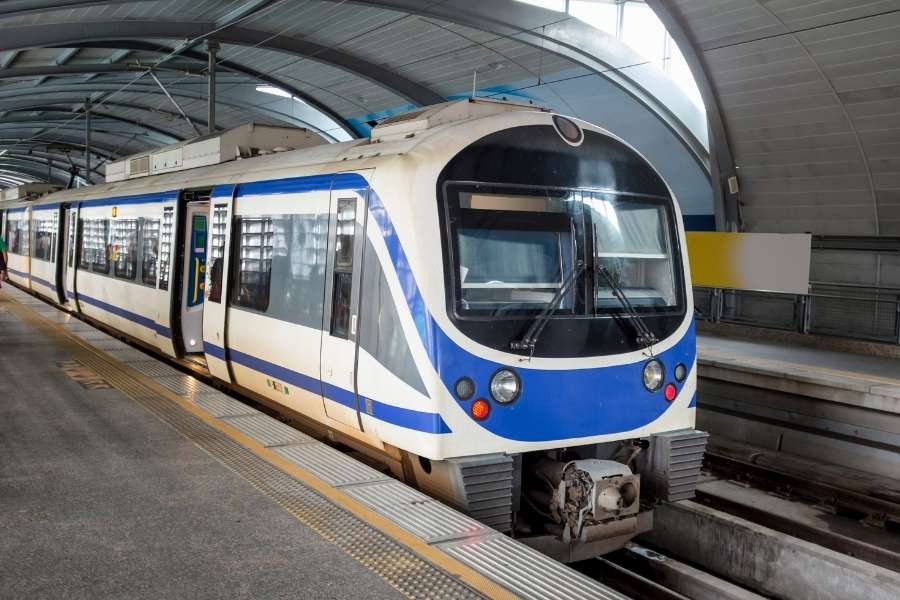
MRT Metro Subway
The MRT in Bangkok (the blue line) starts at Hualampong Station (at the south of the city) and runs a half circle up through the city to Bang Sue Station in the north. Tickets cost 15 to 40 baht depending on the distance you need to travel. *You can get a day pass if you are travelling around the city a lot, enquire to the staff at the station.
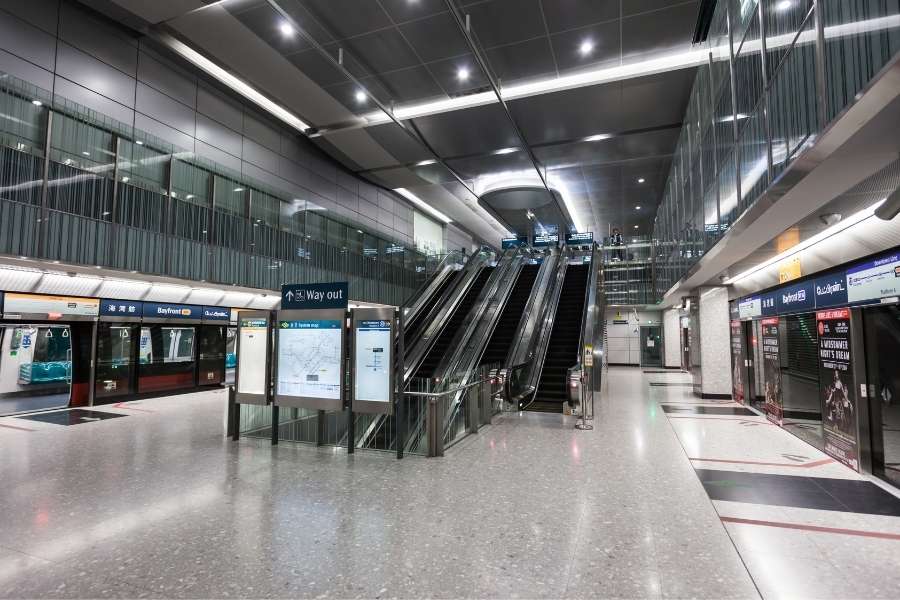
The MRT line meets up with the sky train stations at several stops including Si Lom (Sala Daeng BTS Station), Sukhumvit Station (Asok BTS station), Phetchaburi Station (meets up with the Makkasan Airport Rail Link Station), and Chatuchak Park Station is nearby to Mo Chit BTS Station.
HuaLampong Train Station
To get to the train station take the MRT Subway to HuaLampong Station (from there you can book and take trains to Don Muang Airport (low-cost flights), Chaing Mai, Butterworth (Penang), Nong Khai (Vientiane) all the way to Kuala Lumpur and Singapore.
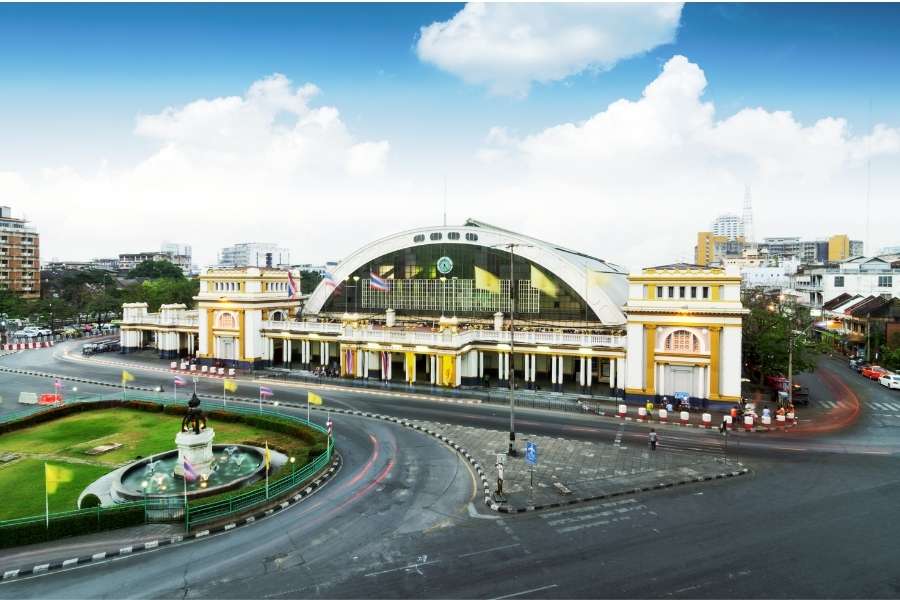
Other popular train routes from Bangkok are as follows:
- Bangkok to Ayutthaya (the most beautiful temples not far from Bangkok)
- Bangkok to Nong Khai (just across the border from Vientiane in Laos)
- Bangkok to Ubon Ratchathani
- Bangkok to Aranyaprathet (to get to Cambodia)
- Bangkok to Kanchanaburi
- Bangkok to Hua Hin (small coastal resort town in the south)
- Bangkok to Butterworth (Penang) or on to Kuala Lumpur and Singapore
Trains have different classes, with sleeper carriages having pull out seats that turn into beds. The bathroom carriage on the trains leaves a bit to be desired. There is a kitchen cart on many of the overnight trains, although the food is very basic and bland.
Hualampong Station has a variety of cafes, general stores, an information desk, toilets, showers (10baht), lots of seating, a left luggage service, as well as souvenirs, maps and everything you’d normally need. You can purchase dinners that are packaged up for you to bring on the train.
*for more information on rail travel take a look at “The man in seat 61” www.seat61.com
BTS Sky Train
The sky train in Bangkok runs on two lines, Sukhumvit Line (dark green) and Silom Line (light green). A ride on the BTS will cost 15 to 40 baht depending on the distance you travel.
The Sukhumvit Line starts at Mo Chit in the north of the city (near the Mo Chit bus terminal) and is within walking distance to Chatuchak Park MRT station (visit the Chatuchak Market via this station on the weekends). The Sukhumvit line also meets the Airport Rail Link Line (red) at Phaya Thai Station.
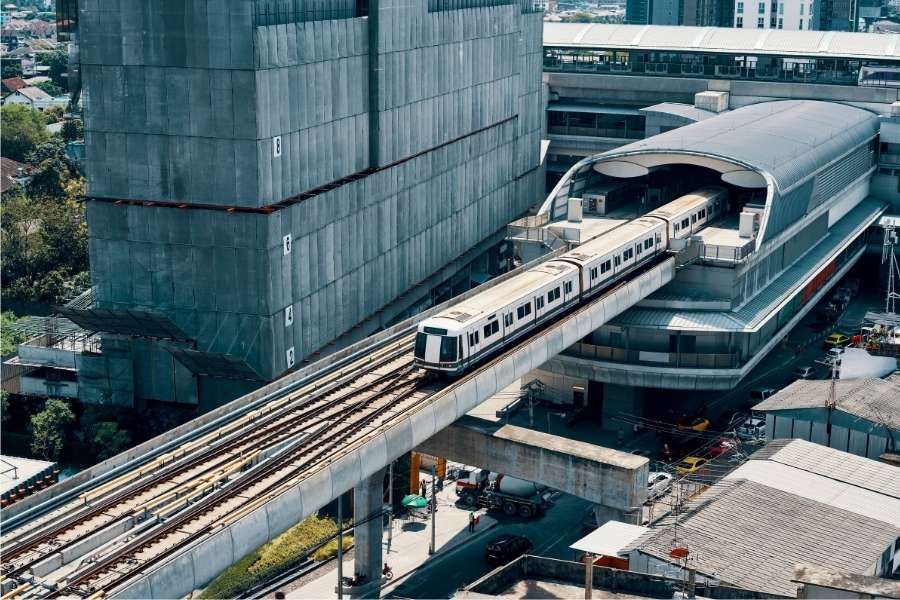
Sky Train gives a nice view of the city & is a great way of avoiding traffic
Bangkok City Public Buses
Bangkok has a large public bus system, reaching all corners of the city, as well as public buses connecting all cities in Thailand. A one hour ride from Don Muang Airport to Victory Monument via Lad Prao can cost as little as 15 baht.
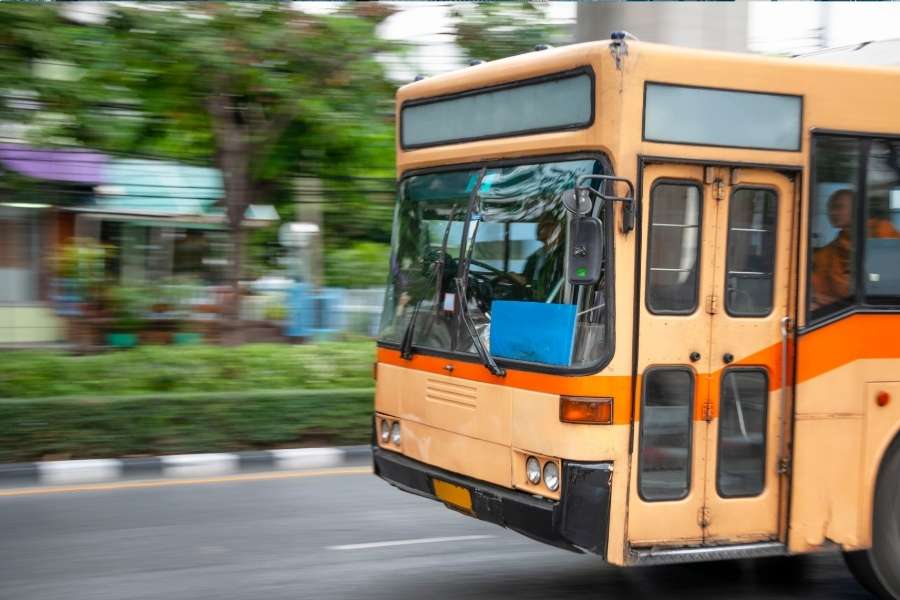
Public buses are a great way to travel and meet locals and are usually less expensive than private bus companies
You can get a bus map from any tourist information office, or online (or you can just jump on a bus that’s going the direction you want to go, and hope for the best). Most of the buses in the city don’t have air-conditioning and travel with the windows open (traffic fumes fill the bus when sitting in traffic for a long time, but it is bearable for short trips).
Taxis
Taxis in Bangkok are inexpensive when compared to large western cities, although are more expensive than the MTR and BTS. If you are staying in Khao San Road then you must either take a public bus, taxi, tuk-tuk or riverboat because the MRT and BTS line does not go that far.
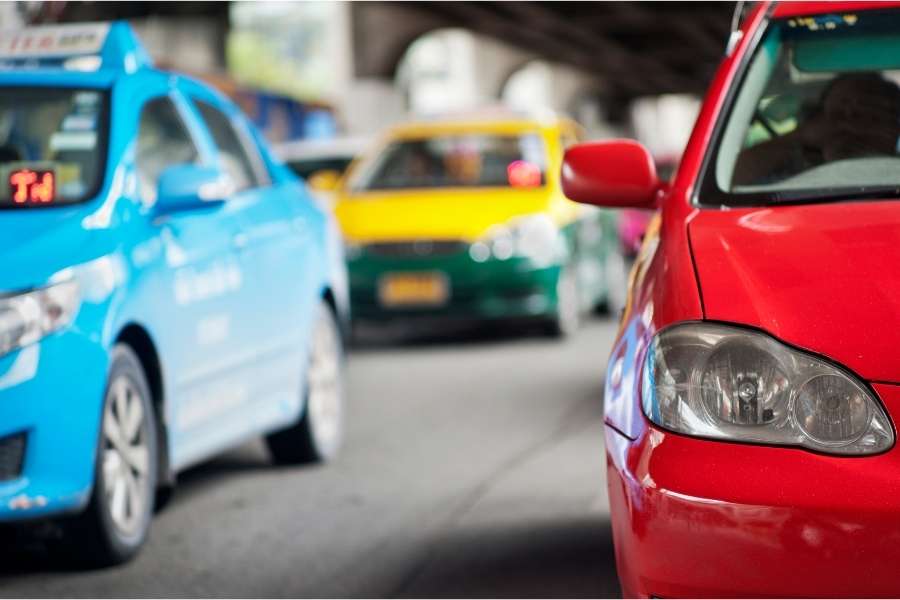
Taxi drivers in the touristy areas and the CBD usually have a good grasp of English, although in some of the outer areas of the city finding an English speaking taxi driver is sometimes a challenge. It helps to have your destination written down in Thai (a hotel receptionist can write it down for you) as well as keeping a business card of the hotel your staying in your wallet for when you want to return just to make things easier if your driver cannot fully understand what your saying.
Taxis in and around Khao San Road are notorious for overcharging and not putting the taximeter on (often just telling you are a highly inflated price when you first tell them where you want to go). I have been told the charge was 1000 baht for an 80 baht trip – lucky I had taken the same trip many times before and knew that the taxi driver was trying to scam me. As soon as you sit in the taxi, tell the driver they must use the meter, if he says no, just get out and get another taxi.
Grab
Things have got a lot easier since ride-hailing apps like Uber came along. In Thailand the most used ride-hailing app is Grab (as is used in most of South-East Asia), you will know the price upfront and the type of car or motorcycle taxi you will get. The only problem I had using it is getting the taxi to pick me up exactly from where I was. Most of the time I go into a hotel lobby and get the Grab taxi to meet me there.
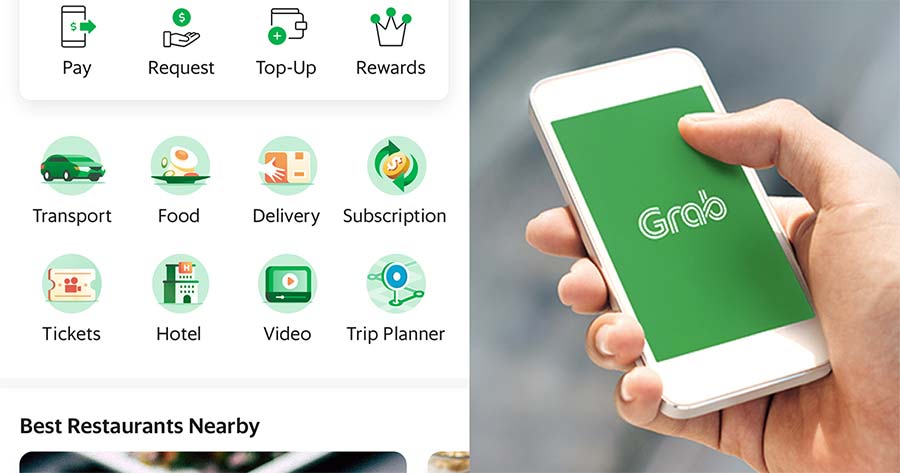
Tuk-Tuks & Motorcycle Taxis
You first approach a tuk-tuk driver or motorcycle taxi and tell them where you want to go, and they will give you a price (which you will need to barter down to often around half, sometimes they see a ‘tourist’ and double or triple the regular price).
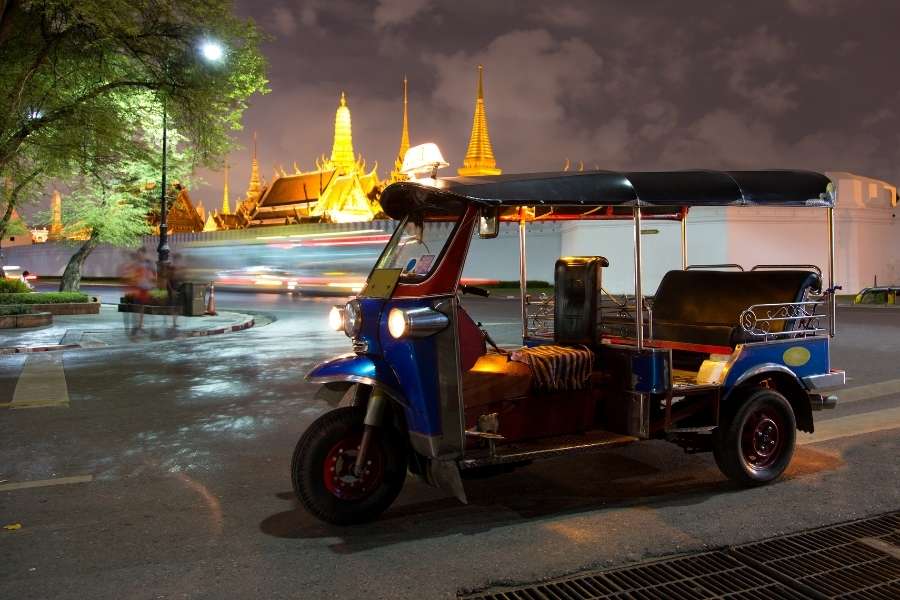
Tuk-tuks generally hang around large shopping centres or popular tourist attractions like temples and Khao San Road. Motorbike Taxis have general areas from which they wait and work from, usually along city streets not as close to large shopping malls as other car taxis and tuk-tuks.

Motorcycle Taxi driver wearing a vest of his company colour.
Bangkok is well set out, with wide footpaths in most areas of the city, therefore, making it easy to get around when walking. There are footpath overpasses on most of the busy freeways making it safer to cross, although in the summer it is almost unbearable to walk around in the sun, therefore, walking around the city is best in the winter when you can comfortably explore the city on foot.
Bangkok is a great starting point for any type of adventure through South East Asia, as transport provides hassle-free connections to any city within Thailand, as well as surrounding countries. Minibus, bus and other attraction tours are all advertised at many travel agents in Bangkok, especially Khao San Road – where you can discuss travel plans with many of the friendly travel agents as well as fellow travellers.
Travelling To Thailand Soon?
Check out all the available visa options for tourists and digital nomads in Thailand.
Thailand Digital Nomad Visa & Alternatives – All Visa Options Explained
Find out the most popular destinations for digital nomads in Thailand.


